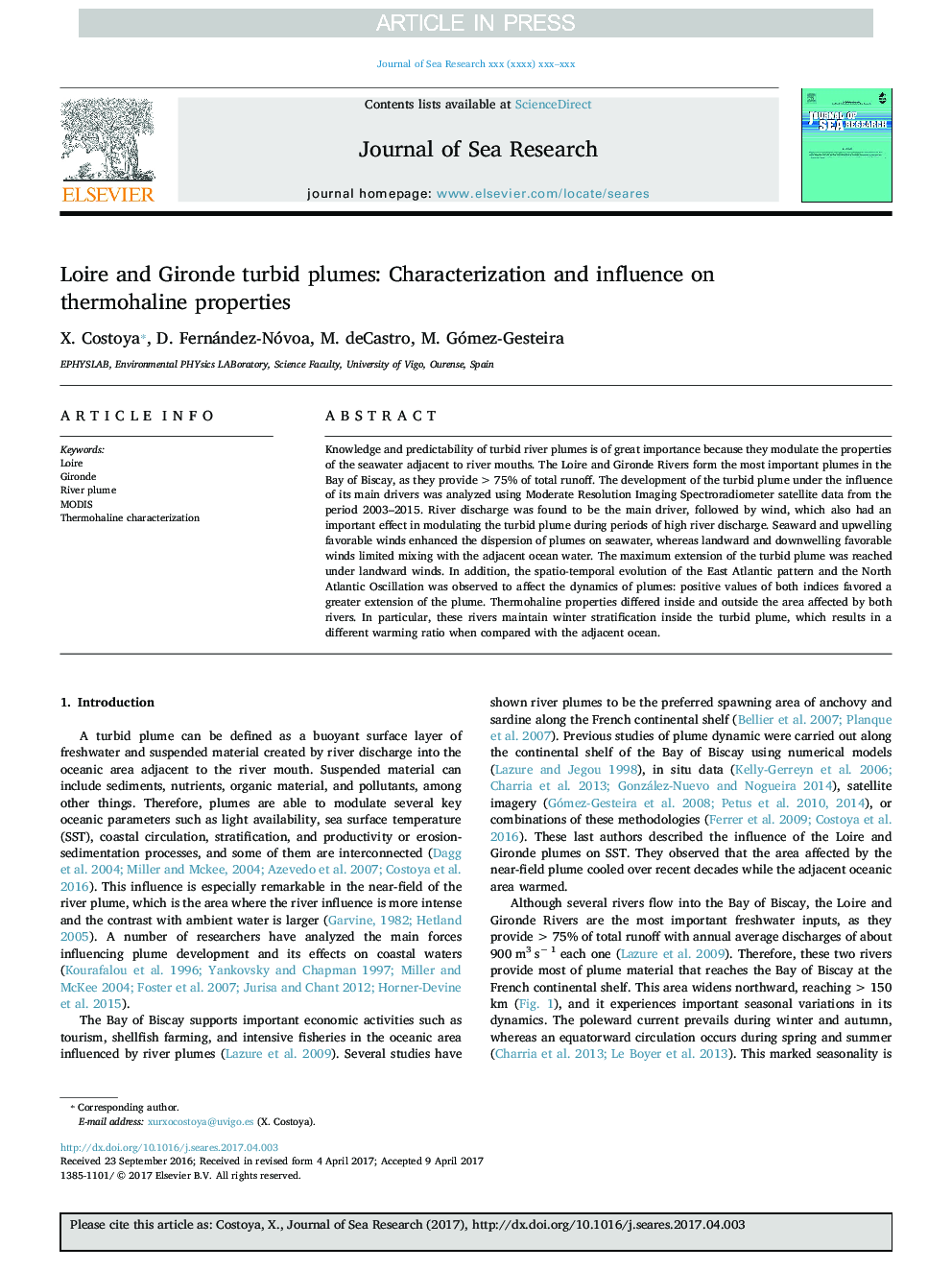| Article ID | Journal | Published Year | Pages | File Type |
|---|---|---|---|---|
| 8886193 | Journal of Sea Research | 2017 | 10 Pages |
Abstract
Knowledge and predictability of turbid river plumes is of great importance because they modulate the properties of the seawater adjacent to river mouths. The Loire and Gironde Rivers form the most important plumes in the Bay of Biscay, as they provide >Â 75% of total runoff. The development of the turbid plume under the influence of its main drivers was analyzed using Moderate Resolution Imaging Spectroradiometer satellite data from the period 2003-2015. River discharge was found to be the main driver, followed by wind, which also had an important effect in modulating the turbid plume during periods of high river discharge. Seaward and upwelling favorable winds enhanced the dispersion of plumes on seawater, whereas landward and downwelling favorable winds limited mixing with the adjacent ocean water. The maximum extension of the turbid plume was reached under landward winds. In addition, the spatio-temporal evolution of the East Atlantic pattern and the North Atlantic Oscillation was observed to affect the dynamics of plumes: positive values of both indices favored a greater extension of the plume. Thermohaline properties differed inside and outside the area affected by both rivers. In particular, these rivers maintain winter stratification inside the turbid plume, which results in a different warming ratio when compared with the adjacent ocean.
Keywords
Related Topics
Physical Sciences and Engineering
Earth and Planetary Sciences
Oceanography
Authors
X. Costoya, D. Fernández-Nóvoa, M. deCastro, M. Gómez-Gesteira,
